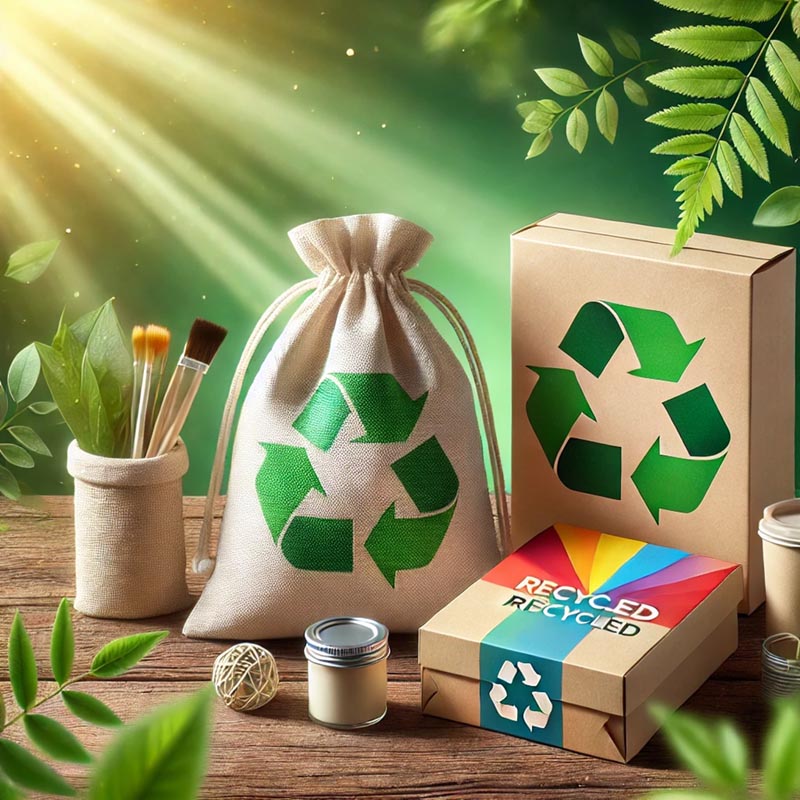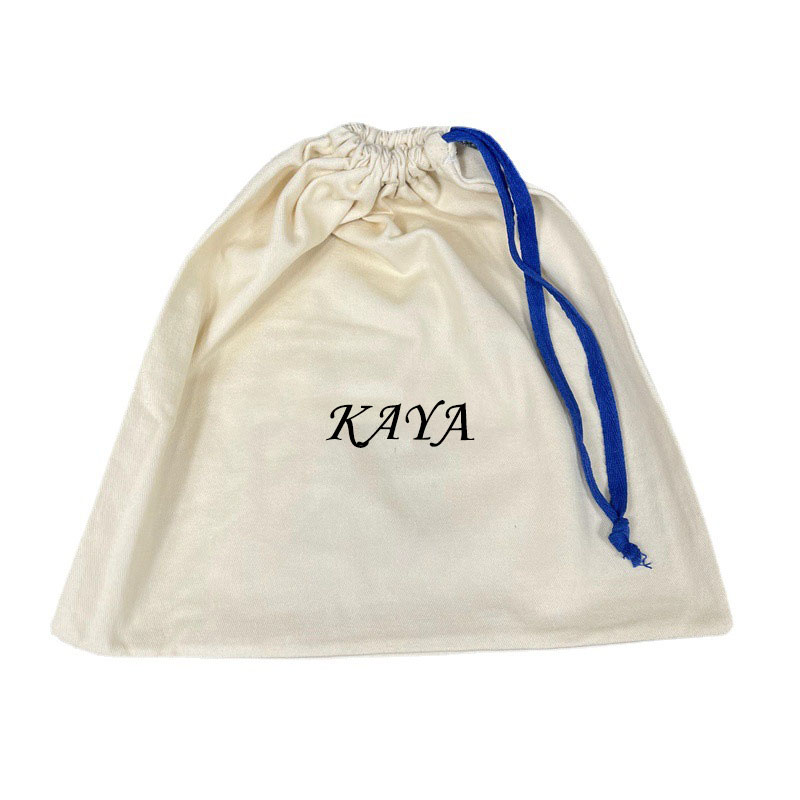Sustainable Packaging in Action: A Drawstring Bag Manufacturer’s Practical Transition
Under the dual pressure of tightening global environmental policies and rising consumer awareness, the drawstring bag manufacturing industry is facing an unprecedented opportunity for transformation. With the enforcement of EU EPR regulations, green requirements in cross-border e-commerce, and Gen Z’s preference for sustainable packaging, environmental protection has shifted from being a CSR checklist item to a survival imperative.
For export-oriented drawstring bag factories, packaging innovation is no longer a question of whether to act, but how to implement it effectively. The challenge lies in balancing cost control with strategic upgrades—turning packaging from a mere tool for protection during transport into a value-enhancing asset that reduces trade risks and boosts customer loyalty.
Three Accounts to Settle First: Why Change?
1. The Cost Account
- An extra cubic meter in sea freight packaging costs around $200 more
- Overuse of plastic film results in ¥80,000–¥100,000 extra expenses annually
- Real case: a peer manufacturer faced ¥300,000 in losses due to non-compliant packaging being held at customs in the EU
2. The Client Account
- Surveys show: 67% of overseas clients require recyclable packaging
- Quote success rate increases by 40% when eco-packaging is used
3. The Long-Term Account
- Products with environmental certification enjoy an additional 3% export tax rebate
- Loyal customers are willing to pay 5% more for sustainable packaging
Four Fast and Effective Improvement Strategies: How to Do It?
- ① Three-Step Material Upgrade
- Basic Level: Switch plastic bags to kraft paper bags (cost-neutral)
- Intermediate Level: Incorporate 30% recycled plastic (cost reduction of 12%)
- Advanced Level: Trial corn starch-based packaging (ideal for premium clients)
- ② Simplified Packaging Design
- Remove separate drawcords; integrate built-in storage pouch
- Replace printed manuals with QR codes on the outer packaging
- Lab results: 20% ink reduction has no negative impact on usability
- ③ Smarter Transport Packaging
- Reuse old cartons with erasable label zones
- Replace foam with inflatable air cushions, reducing volume by 50%
- Collaborate with nearby furniture factories: use wood shavings as a moisture barrier
- ④ Establish Reuse & Recycling Incentives
- Overseas customers can return 10 old packages for 1 new one
- Domestic users enter a lucky draw with returned bags
- Recycled fabrics are upcycled into small promotional keychains
Core Eco-Friendly Materials for Drawstring Bags
Bio-Based Materials
- PLA (Polylactic Acid)
- Source: Extracted from corn/sugarcane
- Decomposition: 90% biodegradation in 180 days (soil)
- Performance: Tensile strength ≥35 MPa (comparable to PE bags)
- Use Case: FDA-compliant food-grade packaging
- Bamboo Fiber Blends
- Composition: Bamboo pulp fiber + 30% recycled PET
- Advantage: Natural antibacterial properties (99.2%) + high breathability
- Limitation: 18% higher cost than standard canvas
Recycled Materials
- rPET (Recycled Polyester)
- Source: Recycled PET bottles → crushed → regranulated → spun
- Certification: GRS 4-star (Global Recycled Standard)
- Example: One A4-size bag = 8 × 500ml bottles
- Ocean-Bound Plastic
- Innovation: Adding 5% silane coupling agent improves strength by 23%
- Market: Sells at 30% premium over regular recycled materials
Biodegradable Composites
- PBAT + Starch Compound
- Composting: Fully degrades within 45 days under industrial composting
- Printing: Compatible with water-based inks (≥95% adhesion)
- Mycelium-Based Materials
- Cultivation: Grows in 7 days with controlled density (0.15–0.3g/cm³)
- Application: High-end, luxury temporary packaging, decomposes with zero residue
Natural Fibers
- Organic Cotton Canvas
- Certification: GOTS-certified, no chemical additives
- Cost: 25% more expensive than regular cotton, but favored by EU/US baby product brands
- Linen / Jute
- Functionality: Antibacterial performance peaks at 12% moisture content
- Technical challenge: Requires pre-shrinking to avoid >3% shrinkage
Material Selection Matrix
| Evaluation Dimension |
Fast Fashion Clients |
Luxury Brands |
Bulk B2B Clients |
| Core Concern |
Cost sensitivity (≤¥3.5/unit) |
Premium feel |
Shipping protection |
| Recommended Material |
rPET + Recycled Cotton Blend |
Mycelium + Organic Linen |
Bamboo Fiber-Reinforced PLA |
| Price Premium Potential |
+8% |
+45% |
+12% |
Real-World Cases from Our Factory
- 2023 Optimization Highlights
- Replaced color box packaging with canvas bag + jute twine
- → Cost per unit dropped from ¥2.3 to ¥1.6
- → Unexpected benefit: Customers reused the bag as a shopping tote, sharing on Instagram
- Used brewery waste grain husks as cushioning material
- → Improved moisture resistance by 30%
- → Received local government eco-subsidy
- University collaboration:
- → Dyed fabric using expired tea leaves → saved over ¥4,000 per batch
- → Developed naturally scented, limited-edition versions
Agile Steps to Kickstart the Transition
- Start with Sample Packaging
- → Use minimal investment to test client reactions
- Seek Policy Support
- → Local governments often offer eco-tech upgrade subsidies (up to ¥200,000)
- Storytelling Over Statistics
- → Print on bag: “I used to be 5 plastic bottles.”
- → Mark shipping boxes: “This box has been reused 3 times.”
- Special Notes
-
- Don’t aim for 100% eco from the start—achieve 30% first
- Retain traditional lines and transition gradually
- Document the process with short videos—they make for great ads
Conclusion
Upgrading to sustainable packaging is not just an idealistic movement—it is a restructuring of the manufacturing value chain. From experimenting with bio-based materials and building closed-loop systems for production waste, to optimizing shipping volume and unlocking brand premiums via carbon labels, every step of progress reshapes a traditional factory’s competitive model.
When packaging costs are redefined as sustainable investments, and customs penalties turn into policy incentives, the transformation of the drawstring bag industry reveals a fundamental truth: sustainability is not a burden—it’s the key to opening new markets. The companies that first convert their packaging systems from cost centers into profit engines will ultimately lead in the global green trade landscape.






 We like to do design according to all the customers' requirements, or offer them our new designs. With strong OEM/ODM capabilities, we can fill your sourcing demands.
We like to do design according to all the customers' requirements, or offer them our new designs. With strong OEM/ODM capabilities, we can fill your sourcing demands.